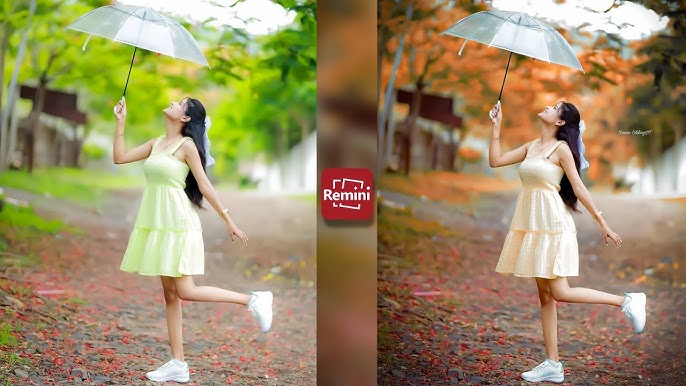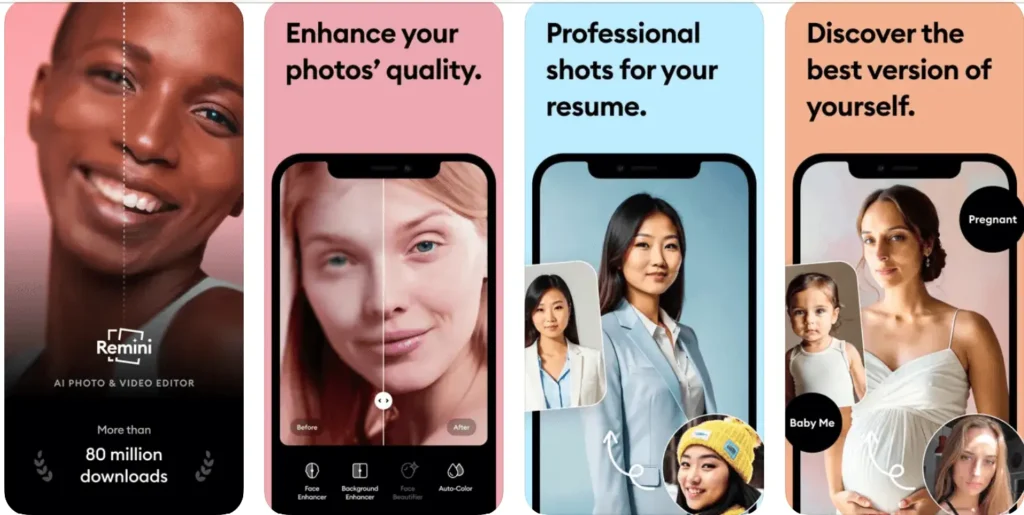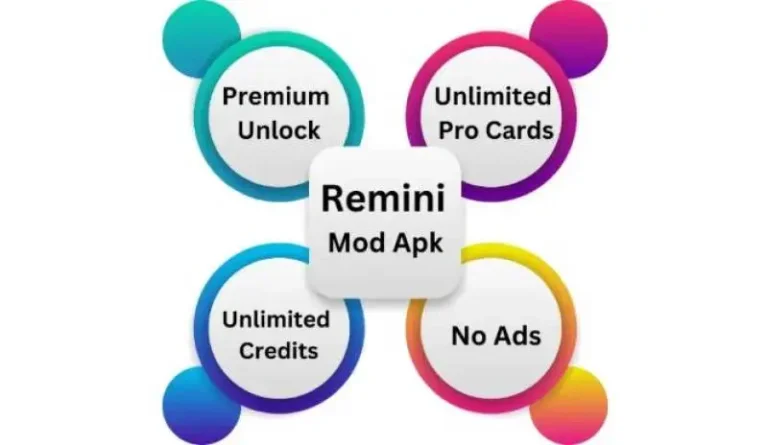Remini With Lightroom: The Perfect Companion For Users
Modern photography makes capturing and making memories a much simpler and easier task than it has ever been. As long as we have powerful photo editing apps at our fingertips, we can enhance, restore, and beautify images as much as you want them.
Among this space, there are in fact two standout tools — Remini and Lightroom. Together they are a perfect partnership making them a perfect duo for stunning visuals.
If you are a professional photographer or a casual user wanting to replace your grainy photos with colorful and beautiful shots, then combining these apps let you take your photos to the next level.
In this post we’ll discuss how Remini and Lightroom work together, learn about how lightroom is and why you need them.
What is Lightroom?
Adobe Lightroom often referred to simply Lightroom is a power photo editing software meant usually for photographers not just hobbyist. It’s part of the Adobe Creative Cloud suite, known for its clean user interface, versatility and ability to handle high resolution images.

The list goes on, lightroom allows users to fix everything from brightness to contrast, color balance, sharpness, and anything in between.
Unlike Photoshop, which is undoubtedly the most powerful photo editor, photographer and graphic designer alike use Lightroom to enhance and organize photos.
Being able to improve your images without too much editing makes it ideal for those who want to create their images but don’t want to get into overly complex editing processes.
Key Features of Lightroom
- Non-Destructive Editing: The beauty in Lightroom is that users can edit an image without changing the original. Thus you’re allowed to fully experiment on your photos without the worry of it being locked in.
- Presets for Quick Edits: There are countless presets for Lightroom, pre configured settings that are applied to your photos validating or giving them a specific look or style. For users who want professional looking edits with just a few clicks, these presets were made.
- Detailed Adjustments: Lightroom places in your hands all the controls needed to fine tune your exposure and contrast, as well as tweak specific colors and shadows.
- RAW Image Editing: If you want to do professional editing RAW files are what you need because these files contain all the captured data by your camera sensor. RAW files are as a piece of cake for Lightroom for maximum image quality.
- Photo Organization: Lightroom’s more than an editing tool, it’s also a great photo management system. You can collect your images into collections, add tags and search for images by keywords.
- Mobile Integration: Preserving desktop quality editing on the go, the Lightroom mobile app takes the power and editing quality of desktop editing and put it directly in the palm of your hand.
What is Remini?
Remini is a photo enhancement app that strives to bring old or poor quality photos back to life. It cleans up images using AI powered technology to make the images sharper, clearer, and overall better.

One of Remini’s most popular functions is to revive vintage photos, fix blurry images and make old memories look as if they had been taken with a modern camera.
Whereas Lightroom is great for letting users ‘work the kinks out’ by controlling everything, Remini takes the opposite tack, being, frankly, more automated.
That’s why Lightroom CC is a happy cousin to this: it can restore clarity or increase the resolution of low-resolution shots before importing them into Lightroom for real work.
Also Get:
Why Remini and Lightroom Are Perfect Companions – Simple Steps
When used together, Remini and Lightroom provide a complete photo editing solution. Here’s how:

Step 1: Enhance Clarity with Remini
First, upload your photo to Remini. Remini’s AI can sharpen and enhance whether it’s a photo of an old family photo, a low quality snapshot, or a photo with the motion blur, and deliver the details you didn’t know were there.
Step 2: Advanced Editing in Lightroom
Imported into Lightroom, your photo will be ready to be further edited for awesome. Lightroom’s tools let you change light, colors, textures to suit exactly the look you want.
Step 3: Apply Finishing Touches
The presets and brushes in Lightroom lets you insert creativity to your shots – just vintage filters, cinematic tones or staggering effects.
Step 4: Share and Save
When you’re done editing, export your photo to a high resolution. The apps also make it easy to share your masterpiece to social media platforms, so that it gets to your fans the way it’s supposed to — in high quality.
Lightroom for Beginners: Getting Started
If you’re new to Lightroom, here’s a quick guide to help you get started:
- Import Your Photos
Open Lightroom and import your photos by clicking on the “Import” button. You can add photos from your camera, phone, or computer. - Basic Adjustments
Begin with basic adjustments like exposure, contrast, and white balance. These settings help set the foundation for your edit. - Use Presets
Explore Lightroom’s presets to apply instant effects. You can also download or purchase additional presets online. - Fine-Tune Colors
Use the HSL (Hue, Saturation, and Luminance) sliders to tweak individual colors in your photo. This is great for making skies bluer or skin tones more natural. - Sharpen and Reduce Noise
If your photo is grainy or lacks sharpness, Lightroom’s noise reduction and sharpening tools will come in handy. - Crop and Straighten
Use the crop tool to improve composition and straighten crooked horizons.
Why Lightroom Stands Out
Lightroom isn’t just an editing tool—it’s a creative hub. Its intuitive interface and powerful features make it a favorite among both professionals and amateurs. Some of its standout qualities include:
- Batch Editing: Edit multiple photos simultaneously, saving you time when working on large projects.
- Sync Across Devices: Your edits are saved to the cloud, so you can switch between your desktop and mobile devices seamlessly.
- Community Resources: Lightroom has a thriving community of users who share tips, tricks, and presets, making it easy to learn and improve.
Tips for Using Remini and Lightroom Together
- Start with Restoration: Use Remini to restore and enhance older or damaged photos. This will give you a clean slate to work with in Lightroom.
- Combine Presets: Experiment with Lightroom presets to see how they enhance the work done by Remini.
- Balance Automation and Control: Let Remini handle quick fixes, but use Lightroom for creative and detailed edits.
- Practice Makes Perfect: Spend time exploring both apps to unlock their full potential.
Conclusion
If you like photo editing in the world then joining Remini and Lightroom is a game changer. Lightroom offers the tools to refine and perfect and Remini takes care of the heavy lifting by restoring and enhancing images.
These are the ultimate duo if you are looking to bring your photos to life whether it’s to bring back old memories or make new ones.
Both tools provide professional quality editing with intuitive interfaces and powerful features making professional quality editing available to everyone.
So why not give them a try? The best thing you can do for your photos is pair Remini with Lightroom.
FAQs
How is Remini different when compared to Lightroom?
While Lightroom deals with more advanced editing and fine tuning for professional quality images. But Remini specializes in the process of enhancing and restoring low quality or old photos all using AI.
How can you use Remini and Lightroom side by side?
Of course they are perfect together. Use Remini to bring clarity and quality to your photos and then make them your own with Lightroom’s powerful tools.
Can beginners use Lightroom?
Absolutely! It’s an easy to use interface with presets for beginners that allow for edits to the photos while at the same time offering such advanced features that professionals can also take advantage of.
Does Remini work with all photos?
Remini works best on low result, blurry images, or old photos, greatly sharpening and improving the detail on them.
Is Lightroom available on my smartphone?
No doubt that Lightroom has a mobile app, which is almost all features of the desktop version, so you can edit your photos based on the go.
Read Also:







